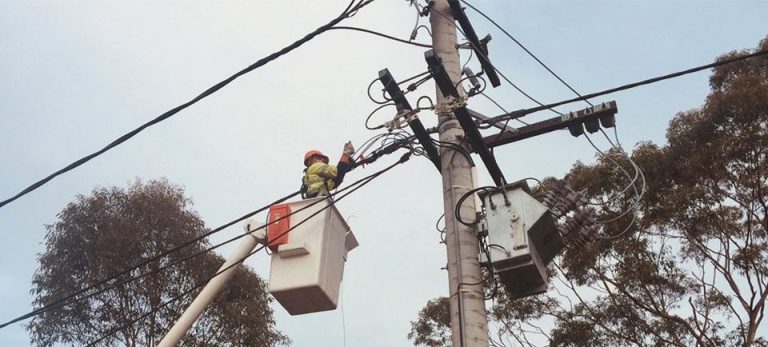Top LinkedIn Automation Tools You Need to Know About in 2025
Networking on LinkedIn has evolved rapidly, and in 2025, the demands on professionals are greater than ever. With larger networks, faster communication cycles, and increased competition, manually managing connections and outreach is no longer enough. Automation tools have become essential in ensuring efficiency while maintaining authenticity.
The best automation tools do not replace human interaction; they enhance it. They handle repetitive tasks like scheduling, tracking, and reminders, giving professionals more time to focus on building genuine relationships. For anyone serious about business development or career growth, choosing the right automation tool in 2025 can make the difference between random networking and a structured pipeline of opportunities.
Why Automation Tools Matter in 2025
In today’s digital business landscape, automation is no longer a luxury — it’s a necessity. As professional networks expand and competition intensifies, the challenge is not just building connections but managing them consistently over time.
Automation provides the backbone for scaling outreach, ensuring no opportunity is missed while still leaving space for genuine interaction. When applied thoughtfully, automation doesn’t strip away authenticity; instead, it amplifies it by giving professionals more time to focus on meaningful conversations and strategic relationships.
The Need for Efficiency
Networking manually may work when your circle is small, but as connections grow into the hundreds or thousands, staying organized becomes overwhelming. Sending requests, tracking responses, and remembering follow-ups quickly consume valuable hours.
Automation solves this problem by creating a structured system for managing these tasks at scale. It ensures that reminders are sent, messages are tracked, and prospects aren’t overlooked. Efficiency isn’t about cutting corners — it’s about reallocating time toward the high-value activities that drive career and business growth.
Supporting B2B Sales
Understanding b2b sales meaning clarifies why automation plays such an important role. In business-to-business sales, decisions are rarely made by a single person; they often involve multiple stakeholders across departments. Managing outreach to different roles, nurturing prospects over long sales cycles, and keeping communication consistent requires a level of coordination that manual processes can’t sustain. Automation tools make it possible to manage these multi-touch workflows seamlessly. They enable professionals to track each prospect’s progress in the pipeline, ensuring steady and professional engagement.
Balancing Speed With Authenticity
One of the most common concerns about automation is the fear of sounding robotic. In 2025, however, tools are being designed to combine efficiency with personalization. Features such as dynamic message customization, behavioral triggers, and content scheduling give users the ability to accelerate processes without losing the human element.
The best results come from blending automation with authenticity: using tools to handle the repetitive groundwork while adding personalized touches that show sincerity. This balance ensures that outreach feels intentional, not mechanical, and that professional relationships remain rooted in trust.
Creating Sustainable Growth
Ultimately, automation tools matter because they create sustainability. Networking and lead generation are not one-time efforts; they require consistent attention over weeks, months, and years. Without support, many professionals burn out or let opportunities slip through the cracks.
Automation provides the structure needed to keep activity steady, ensuring that growth doesn’t come in short bursts but as a reliable, ongoing process. In this way, automation becomes not just a tool for efficiency but a foundation for long-term career and business success.
The Key Features of a Strong LinkedIn Automation Tool
Not all tools are created equal — the right features separate effective solutions from ineffective ones.
Smart Scheduling and Follow-Ups
Tools that automate follow-ups ensure prospects aren’t forgotten. Spacing these messages thoughtfully maintains momentum without overwhelming recipients.
Advanced Personalization Options
The most valuable automation platforms allow you to tailor messages with details that feel authentic, ensuring outreach doesn’t come across as robotic.
Integration With Other Systems
Connecting LinkedIn outreach with CRMs or analytics tools ensures data flows seamlessly, creating a clearer picture of performance.
Top Automation Strategies for 2025
The way automation is applied matters as much as the tool itself.
Focus on Warm Outreach
Instead of blasting cold requests, automation can be used to nurture leads through small touches, such as commenting on posts before sending a message. This builds familiarity and increases response rates.
Use Data to Refine Messaging
Tracking response patterns through automation dashboards reveals what resonates. Messages that perform well can be refined and scaled, while ineffective ones are phased out.
Balance Quantity With Quality
Automation enables scale, but chasing numbers dilutes effectiveness. Using tools to target precise industries or roles ensures better outcomes.
Examples of Effective Automation in Action
Automation delivers results when combined with strategy.
Lead Nurturing Over Time
Instead of a one-off connection request, automation can guide prospects through a gradual journey — a comment on their post, a personalized follow-up, and finally, an invitation to connect. This process feels organic while remaining consistent.
Maintaining Visibility
Scheduling content interactions, such as liking or commenting on prospects’ posts, ensures steady visibility. This type of interaction often builds trust more effectively than one-off outreach.
Streamlining B2B Engagement
In B2B sales, professionals often manage multiple decision-makers across an organization. Automation tools help maintain structured outreach, ensuring consistent engagement across the right roles without losing track of details.
The Role of LiProspect in Automation
Among professionals seeking a balance between efficiency and authenticity, LiProspect is often referenced as a reliable option. Designed to help streamline networking while keeping outreach personal, it reflects how automation tools in 2025 must go beyond speed — they must support meaningful engagement at scale.
Avoiding Common Mistakes With Automation
Even the best tools can fail if misused.
Over-Automating Communication
Sending too many automated requests or messages risks damaging credibility. Automation should support human interaction, not replace it.
Ignoring Personalization
Generic templates feel impersonal and are often ignored. Successful automation incorporates small but meaningful personal details.
Neglecting Ongoing Strategy
Automation isn’t a one-time setup. Regularly reviewing data, refining approaches, and updating workflows ensures tools remain effective.
The Ending Note
In 2025, Linkedin Automation will no longer be optional; it will be essential for professionals looking to grow their networks and drive business opportunities. The right tools provide consistency, save time, and bring structure to complex networking and sales processes. But while automation offers speed, the foundation of success remains authenticity.
Tools like LiProspect illustrate the new balance: automation that scales outreach while supporting genuine connection. For professionals in B2B and beyond, this combination creates networks that aren’t just larger but more valuable. By blending efficiency with sincerity, LinkedIn automation tools help transform contacts into conversations and conversations into opportunities.


